An Inside Look at Marvel Heroes, from a Past Employee (Part 1)
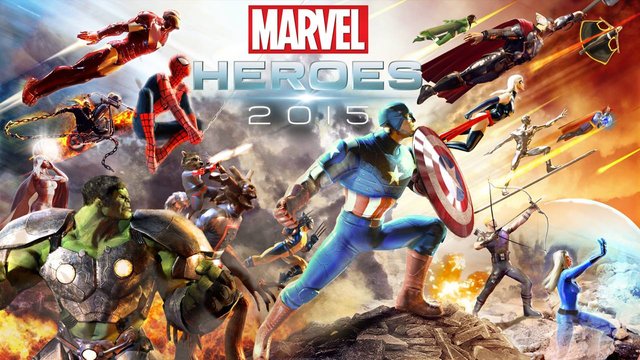
My Game Industry Debut
If you've read my introduction post, you'll hear me talk about bringing my club in for an informational office tour, which then led to internship, part time, and full-time employment. This was with a company called Gazillion, based out of the Bay Area. At the time I joined, they had just launched Marvel Heroes 2015, which was a massive update to fix an initial launch one year prior that was poorly received on a number of levels. After the reduction-in-force (aka RIF or layoffs) that ended my employment along with ~1/3 of the company at the time, they went on to launch another update a year later - Marvel Heroes 2016 - and eventually porting the game to consoles while re-branding the game to Marvel Heroes Omega.
Marvel Heroes very recently shut down, and it was a very messy situation to say the least. The Marvel Heroes story is a super interesting one, and I'd like to dig into some of the reasons why I think the game couldn't pull itself out of a sinking hole, putting aside some serious documented issues happening within the office, ranging from unfair work expectations to misconduct allegations towards the CEO. Let me also be clear that the CEO with allegations was a board member at the time that I was working there, not David Brevik (see below). Dave is an amazing person and very easy to work with (notice I didn't say work FOR).
I'll let you all do the separate readings regarding the office allegations, and focus on specific challenges the game faced that were ultimately too difficult to overcome.
Let's Do a Crash Course, Shall We?
I can't assume everyone knows how games operate, what terms & genres are, and other stuff. So I'll go over some of the stuff relevant to Marvel Heroes and give some context so this is entirely more interesting, because it actually is super in-depth and fun to talk about when you understand some simple concepts & background.
The Action RPG Genre (ARPG)
The development of Marvel Heroes and the beginning of Gazillion was largely fueled by this man right here:
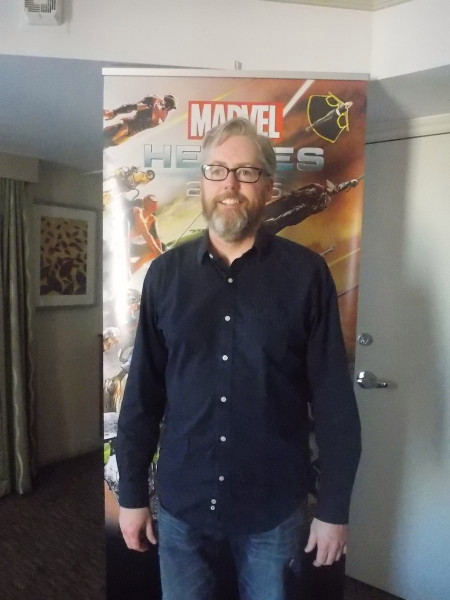
For the gamers out there, you will probably know who he is. For those who don't, his name is David Brevik. He is an icon in the industry, mainly because he co-founded Blizzard North way back in the day - which eventually turned into Blizzard Entertainment. If you don't know what Blizzard is, or if the name strikes a chord, it's probably because they made worldwide news when they launched World of Warcraft (WoW) back in 2008 - a game that is still the #1 MMORPG to this day with millions of players online that all pay subscription fees on a monthly or yearly basis. At its peak, WoW had 12 MILLION subscribers, each paying a regular amount to keep their access to the online service active. This was in 2010, and since the 2008 debut they've launched multiple expansions over the years. Here's a look at all of them, with the smaller icons being updates across the various expansions that introduced major, top-tier raids that involves a level of game design intricacy that is difficult to even explain, much less complete at the highest difficulties:
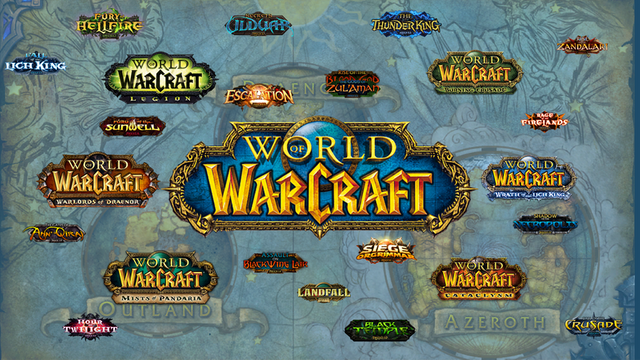
But Brevik wasn't really at Blizzard for WoW's debut, although he has said he was there when they had many talks about it. He was most involved with two games that literally defined a genre that we know as the ARPG genre. Those games are Diablo and Diablo II. They were unlike anything anyone had seen, and it's experiences like this that invoked actual fear and excitement that people hadn't felt before in this format. When you ask people about ARPGs, and specifically what hooked them in Diablo and Diablo II, they'll often mention a couple of key unique features: randomized loot, procedural dungeons, hack & slash action, and the staple isometric camera.
Randomized Loot was an entirely new concept and, for the same reasons that people love playing slot machines - the prospect of getting something amazing that is also completely unexpected - it was a no-brainer why people were hooked when an ultra-rare item dropped from some monster you killed. They even gave you distinct audio ques so you knew when the good stuff dropped. It's textbook classical conditioning. You hear this sound and you know you've gotten something special.
Randomized loot is integral to the genre, not just because it gave that exciting feel of the possibility you'd find hidden treasures that made you more powerful, but because it helped drive incentive to keep playing where things can otherwise get quite repetitive. More on that later, as I'm convinced it played a part in dulling the Marvel Heroes experience.
Procedural Dungeons were another amazing feature of ARPGs. While the Towns were static, every time you entered a new dungeon instance, it was completely different. I could play the game through millions of times and never have the same dungeon, and it prevents replayability getting washed out over a period of time. If I run a dungeon that always looks the same, I will very quickly map the most efficient route and behavior becomes automatic rather than reactive. Automatic behavior as a driver of the main game experience is a deal-breaker for most players. Why play the game for multiple hours when it's dull and not entertaining?
Hack & Slash action is a huge driver. It made you feel powerful. It was badass. It got super intense at times. You'd be slashing through hordes of monsters and having to choose your positioning carefully, watch your health, and manage your resources, like mana & stamina for powers and running, respectively. It was also completely unexpected sometimes to walk into a room to find 50 monsters in a tiny space that immediately turn on you. This action combat drove excitement and heart-pounding moments that kept people coming back.

The Isometric Camera refers to the viewpoint the player has. It's a top-down, angled third-person perspective. Your character moves in a 3D space, but the camera stays put. Marvel Heroes specifically had some cases where this had to be adjusted, particularly in their raids since they aimed to also be an MMO. Here's some perspective shots for an example:
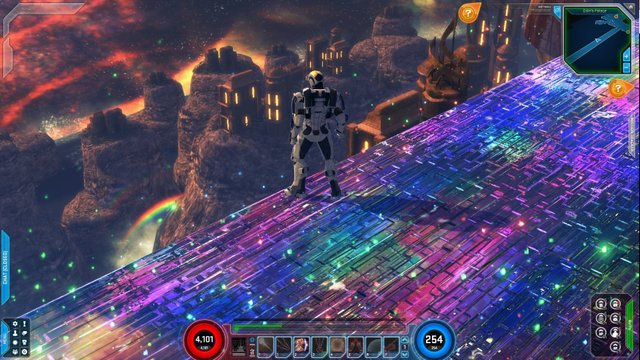
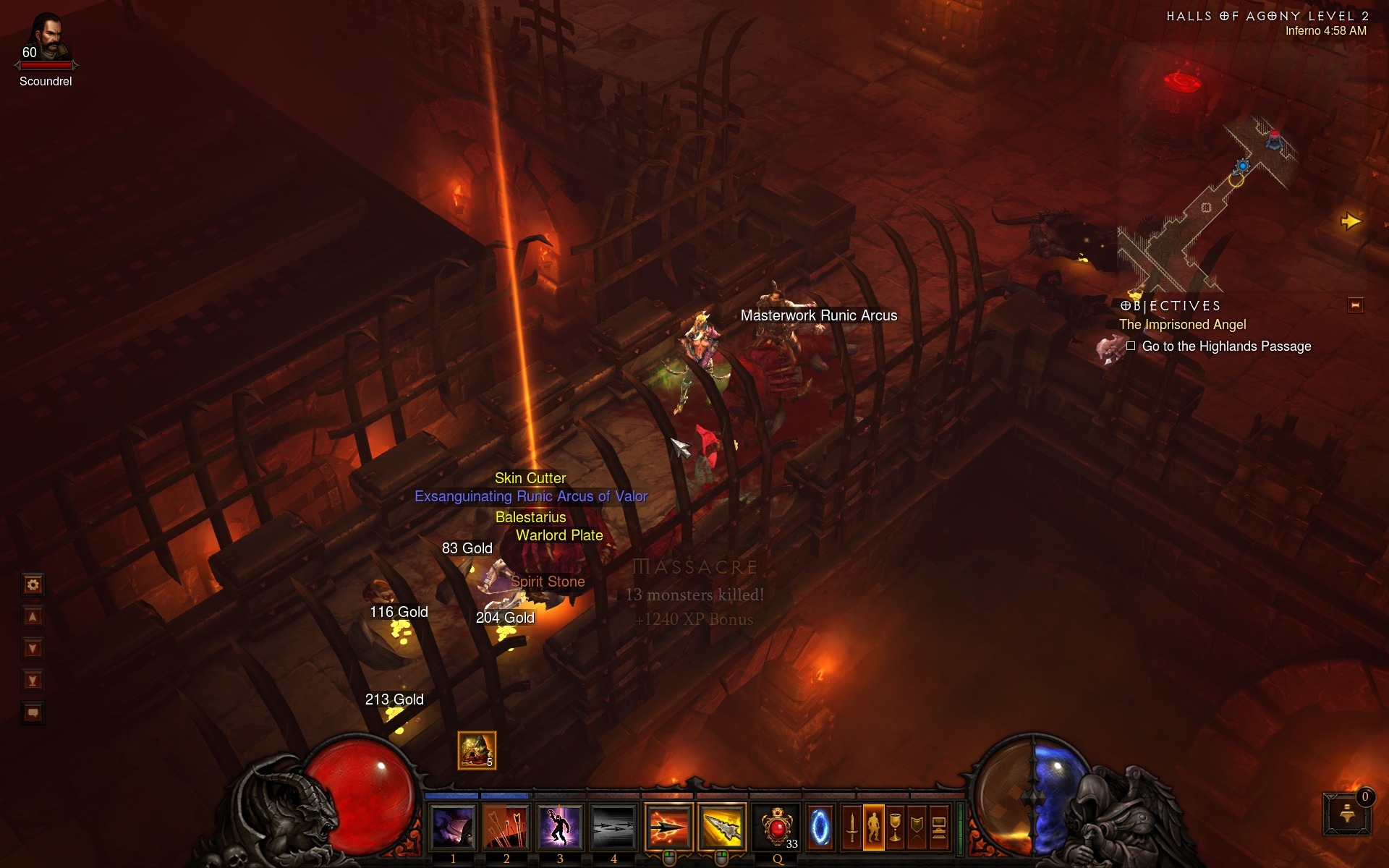
Free to Play (F2P) Games, Microtransactions (MTX), and Games as a Service (GaaS)
Marvel Heroes was a F2P game. Anyone with the hardware to run it could download the game and play instantly. Of course, Gazillion is a business with employees, investors, and overhead that they need to pay. They therefore make their money by selling digital in-game content to their players in various forms.
Leading up to launch, it's more or less standard practice to offer "Founders" or "Early Access" packs for varying prices that can grant early play privileges to players along with other exclusive in-game content. After launch, different packs & bundles can be sold for numerous occasions or remaining on the store for the life of the game (aka evergreen content).
Microtransactions & Lootboxes
Microtransaction refers to purchases that happen within an in-game store. There are different types of items you can buy, but they can largely be grouped into two categories: durable and consumable items. Durable items are things you can buy once and own forever: costumes/skins, mounts, or characters/heroes. Consumable items are as you might guess - you use them once and they give you some sort of benefit and disappear. These can include boosts that last for a period of time (experience, luck/drop chance, or some other unique benefit), items that help expedite in-game mechanics like crafting, and "lootcrates", or random-chance boxes that have varying levels of opportunity to get different kinds of items. The most desirable, of course, being a low chance to receive. From a business perspective, though, the strategy heavily leans on what your store weight leans more heavily on - durable or consumable. I'll delve into this at a more granular level later, but it's a large factor into why I think Marvel Heroes couldn't recover.
You might have recently heard about lootboxes, and it wouldn't be the first time they've received scrutiny. The big recent headline came from EA/DICE's Star Wars Battlefront II. It's a long read, so I'll give you the TL;DR. Essentially, the time it took for players to rack up enough credits to unlock heroes like Luke Skywalker would be around 2 days of actual playtime - for a single character. The workaround would be to buy random loot boxes, and people were enraged that the progression system heavily pointed towards a suggestion to buy lootboxes. But the Battlefront community has an even larger point to be upset about a system that encourages purchases, especially ones that have a random reward - the game wasn't free to play, you had to pay at least $60 to buy it.
More common criticism of lootboxes comes from the random element of the rewards, and the lack of regulation to disclose the chance to receive each item in them. Players are often upset that they pay varying amounts of money and still don't get what they want, and question if they even can get that one special item. The only saving grace is that they usually see someone else running around with it.
Gambling?
So let's address the elephant in the room: how is this not considered "gambling"? That is actually a great question that I wouldn't be able to provide a confident answer if I hadn't gone to work at my next company after Gazillion - GSN Games. GSN Games (yes THAT GSN as in Game Show Network the TV company) made mobile social casino games. Our competitors were Caesar's, Zynga, and others. The apps had varying types of games ranging from video bingo to slot machines. They made MASSIVE amounts of money selling "tokens" that are then used to play the games. What boggled my mind was that while you could buy, play, spin & win, you could never actually cash out the winnings for money. Why the hell would people pay money to gamble when they couldn't recoup their winnings?
GSN was also confused by this, and they did extensive research as to why by asking their actual customers what their incentive was to play. It turns out, and this is where the older-skewing demographic of 50-60 something year-old women came into play, they just liked playing something and winning from time to time. It was a pass-time. They didn't care so much that they couldn't cash out, they just liked winning.
And it's that single point on not being able to cash out that rules it out of the "gambling" definition. This allows them to operate in all states without massive legal headaches and state exclusions.
In order to be "gambling" it has to have three elements: you must wager something of value, you must have a game of chance where you can win or lose that thing of value, and you must be able to take that value out in cash.
The frustrations are still understandable. Someone could get the best thing first try and someone could spend hundreds of dollars and still not get what they want. Although not technically gambling by a legal standard, the draw to lootboxes is identical to the draw in the excitement a potential jackpot on the slots presents. Counter Strike: Global Offensive's weapon crates (which yield varying community-produced skins to make your weapons look cooler) is almost a literal slot machine. It's just missing the handle to pull, which is instead a button. Not a big difference. See for yourself:

Separating emotions isn't really relevant, because the drive to buy in is still the same. If anything, it feels more like a slap in the face because you can only use that item or thing in-game and that value is useless otherwise. Except Valve is walking a super thin line on the edge of the grey zone and the black zone. They have a community market, where users can sell their skins - some actually ranging over $1,000 for the rarest - to other users. This value is gained by either selling skins to other people or depositing actual cash to your account. You can't actually cash out that value, but you can certainly use it to buy games on their portal. So if anything, Valve is at most risk of being targeted for potential gambling, since you are still technically able to obtain something external. But Valve is a massive company and they have the cash to throw when it comes to stomping out litigation fires, so barring some massive worldwide collaboration suit from the biggest countries, I don't see it being reversed soon.
So Why F2P?
You'd be right to ask, it seems like there are so many edgy controversies. For one, whether players like to admit it or not, the idea that they can play a game for free will never get old. It may cause big challenges with player retention, a topic I'll elaborate on later, but if there's no barrier to entry outside of them downloading the game, they will play. And as long as there are games to play, there will be variety.
That's the second portion, the business element. From a business perspective, F2P games offer lots of hedged risk and a more stable business model. In pay to play games, if you're not a Blizzard, Ubisoft, or EA, developing a game for two years is a big bet to make that you'll recoup your investment and have profit when you launch the title at a fixed price. Your timeline is to get funding, develop, hit all your timelines for development & marketing/press activities, and launch. Whether or not future updates (often called Expansion Packs or Downloadable Content/DLC) happen is dependent on if there is confidence that it's worth the extra investment from profits or additional investor funding.
With F2P games, you take much of that out of the equation. While your game costs nothing, you essentially can offer exclusive content to players - which often has a similar price point to the full pay-to-play games, if content is enticing enough - and then continue to offer paid content in-game. Pay-to-play (P2P) game players have a fixed lifetime value (LTV). That value is whatever the price of the game is and whatever other expansions you release, barring some in-game shop that offers something like realm transfers or faction changes like WoW. In F2P, the reality is that ~87-93% of your entire user base, EVER, will not pay you a single dime. But that 7-13% will drive your entire business. They will have LTV ranging from tens of dollars to, and I'm not exaggerating here, tens of THOUSANDS of dollars. Since this model ensures a more steady stream of revenue, it's less risky because you can set out a content plan over years and provide assurance that the business can meet forecasted goals, and if not adjustments to remain on track are easy to pivot towards.
Games as a Service (GaaS)
This concept was put into the spotlight by Blizzard with World of Warcraft. They were not the first to put out a GaaS model, but it drew from the idea that deviated from the traditional "Let's develop a game, release it, and let people play it. That's it." Think any game you played on early consoles before the internet was a thing viable to use. Mario, Ocarina of Time, etc. Those games were not a service.
Most games these days are, actually. It encompasses a company's ongoing commitment to provide an online experience, and that requires constant service and support. While there are many games that succeed today that aren't GaaS, a vast majority that are topping the charts on sites like Twitch.tv (a livestreaming platform, bought by Amazon for ~$1 Billion) are GaaS. It's almost an industry standard, but it's not fair to say that's an accurate statement yet. Nonetheless, most developers are driving towards GaaS models, as it generally means a longer business timeline and game lifecycle.
Stay Tuned for Part 2
While I'd like to continue on, getting into the actual details will need a separate post of its own. If you have questions, feel free to ask below. Next time, we'll get into topics like monetization strategy, the "Golden Cohort", and licensing hurdles - among other things :)
Thanks for tuning in, if you liked this content give a follow to keep up to date with more content just like this. If you've got feedback (I'm a new Steemer, I appreciate all constructive feedback), drop that below also.
This post has caught the eye of @MuxxyBot and has been nominated by the curation team. If chosen it will feature in a curation post by @MuxxyBot. An image from your post may be featured.
Please reply to this comment if you accept or decline.

I accept! Thanks so much for the nomination, definitely looking forward to writing the next part and it will have some really interesting content as I dive into deeper discussion :)
While this rundown is well written and informative, I'd have probably titled this piece something different. I feel like I got bait and switched a bit :( As this piece doesn't really have much of anything to do with the title in question, but only lays the foundation for that, which some of us already possess.
But I do eagerly await part 2!
Hey there! Thanks for the valuable feedback, I will definitely take that into account for future titles once I've finished this post in its entirety. I really wanted to keep going, but I felt the post would get extremely long and drawn out as a single post. Also, while you and I know much about the topics I've outlined, I want to make sure I'm not assuming that everyone does. But I do think I can take your feedback into consideration when titling my posts so you don't feel bait & switched, which is not how I want my readers to feel! Thanks so much for taking the time to read, and I'm going to be working on #2 today (back from vacation with my family)!
Hope you had a good vacation, and I hope it'd be there when I have downtime at work tomorrow to read it! :)
Dude, I learned so much from reading this post. Sorry it took me forever to actually comment on it other than my muxxybot comment, lol. I hope you continue to write awesome high quality content like this, because I really love reading stuff like this and learning what you know from all of your experience in the gaming industry!
Thanks so much! I will be working on #2 today, as I'm back from vacation with my family (the reason for my hiatus, which I hope to not be the case in the future) where I had no access to a computer to put out quality content as I'd like.
Congratulations. This post is featured in today's Muxxybot Curation post.https://steemit.com/curation/@muxxybot/muxxybot-curation-47
Thank you so much! I sincerely apologize for my delay, as I was away with family with no access to a computer for a proper response.
This was a great read. Business model for any game out there, like always is hit and miss, what works for certain titles won't work on others.
In case of Marvel Heroes I think the old base game content was getting stale. When you run over all those zones for thousands of times or more it gets old, so to satisfy old player base, new content must come almost monthly, which is hard to do for any gaming company. While the game had huge potential, limitless lore and characters, without proper guidance and clear goals it just ends up beeing a huge mess. I miss this game already.
You're absolutely right on many fronts. I spent most of this spending detail explaining background for those that might not have the understanding you or I might have, but my next post will address deeper issues like what you've brought up. I'll also provide some other issues I saw that wouldn't be possible to see from a consumer standpoint, and isn't something employees would be able to address while presently working for the company. I think you'll enjoy the next development, and thanks so much for the follow :D